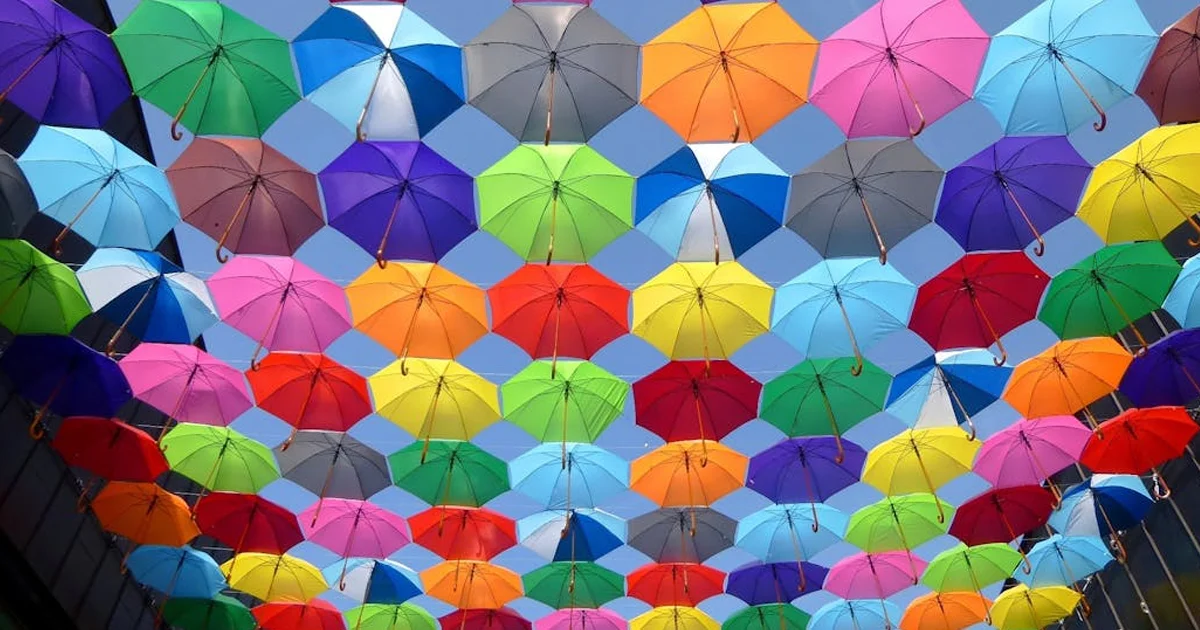Umbrellas and Parasols: Your Multifunctional Allies
When we think of umbrellas and parasols, we usually associate them with immediate protection from rain or the scorching sun. However, these simple objects have a deeper impact on our daily well-being than it seems at first glance. From my experience, using a parasol not only protected me from the rain but also from solar radiation, particularly ultraviolet radiation. Moreover, they have saved me from small inconveniences like falling tree debris or even bird droppings, both at the beach and in other outdoor spaces.
This article will help you understand the true importance of umbrellas and parasols, how to choose the right ones for your needs, and why they should be considered essential in your daily life, whether for protection from the sun or adverse weather conditions.
Sun Protection: How a Parasol Shields You from UV Radiation
One of the main functions of parasols is to protect us from the sun, especially UV rays. Prolonged sun exposure without proper protection can result in severe skin damage, such as sunburns or, in the long term, even skin cancer. This makes parasols a crucial tool for prevention. In my personal experience, I use parasols not only to enjoy the outdoors but also to avoid the harmful effects of UV rays, as the parasol provides an extra layer of protection, especially on days of intense sunlight.
Studies show that not all parasols offer the same level of protection. The ability to block UV rays largely depends on the material and color of the fabric. For example, denser and darker materials tend to block more ultraviolet rays, while lighter fabrics or light-colored ones may allow more radiation to pass through. It’s important to complement the use of the parasol with other measures, like applying broad-spectrum sunscreen.
Beyond the Sun: The Importance of Umbrellas for Rain Protection
Although we often associate umbrellas solely with rain protection, their functionality goes much further. Not only do they keep us dry during a downpour, but they also protect us from the wind and other natural elements that can make our outdoor experience uncomfortable. Sometimes, an umbrella can also be useful to shield us from small falling objects like tree debris or even sand in windy places such as the beach.
From my perspective, the importance of an umbrella is not limited to the rain. I have found that during my walks, a good umbrella or parasol can prevent small particles from the environment, such as dust or debris, from interrupting a pleasant moment, whether I’m strolling or simply sitting in a park.
The Role of Materials in the Efficiency of Sun Protection
One of the most important factors to consider when choosing a parasol or umbrella is the type of material used. As mentioned earlier, thicker and darker fabrics tend to offer greater protection from UV rays. But beyond sun protection, materials also determine their resistance to water and wind.
A high-quality parasol should not only block the sun but also withstand changing weather conditions. Modern umbrellas are often designed with water-repellent fabrics that allow water to slide off without soaking through, while some beach parasols are specifically built to withstand strong winds without tipping over. Paying attention to these details can make the difference between enjoying a peaceful outdoor afternoon or dealing with an ineffective accessory.
Key Aspects When Choosing a Quality Parasol or Umbrella
When looking for a parasol or umbrella, it is essential to assess both their functionality and quality. Based on my own experiences, I’ve learned that investing in a durable product is crucial to maximizing protection and comfort. Some important points to keep in mind include:
- Size: Ensure that the parasol covers enough space to offer adequate protection.
- Material: Choose fabrics that are resistant to water and wind, and make sure they block UV rays if your goal is sun protection.
- Durability: Cheap umbrellas or parasols tend to deteriorate quickly, especially with frequent use.
- Portability: If you plan to carry the umbrella or parasol to various places, make sure it is lightweight and easy to transport.
In my case, I’ve found that a robust, compact umbrella is ideal for everyday carry, while a large, sturdy parasol is perfect for beach days.
How Parasols and Umbrellas Improve Your Outdoor Safety and Comfort
Outdoor safety and comfort largely depend on having the right protection against the weather. Whether it’s scorching sun or heavy rain, parasols and umbrellas play a crucial role in enhancing our experience. In fact, we often expose ourselves to unnecessary risks by not carrying adequate protection.
For instance, continuous sun exposure can lead to dehydration, heat strokes, and more severe issues like heat exhaustion. Parasols provide an immediate refuge to rest and rehydrate. Similarly, a sturdy wind-resistant umbrella prevents those uncomfortable moments when the wind flips the umbrella, leaving you unprotected.
In my experience, a good parasol has not only shielded me from the sun and rain but also from unexpected situations like strong winds that could have made my time outdoors quite uncomfortable.
Conclusion: The Value of Investing in Proper Protection
In summary, both parasols and umbrellas are essential tools for protecting ourselves from weather conditions. They not only protect us from the sun and rain but also from other environmental elements that could cause discomfort or even harm our health. From my personal experience, using the right umbrella or parasol has allowed me to enjoy outdoor activities without worries, whether at the beach, in a park, or walking around the city.
By investing in quality products, you can rest assured that you’ll be prepared for any weather condition, keeping you protected and comfortable. So, the next time you plan to head outdoors, don’t forget to take a good parasol or umbrella with you: your reliable ally in any situation.












